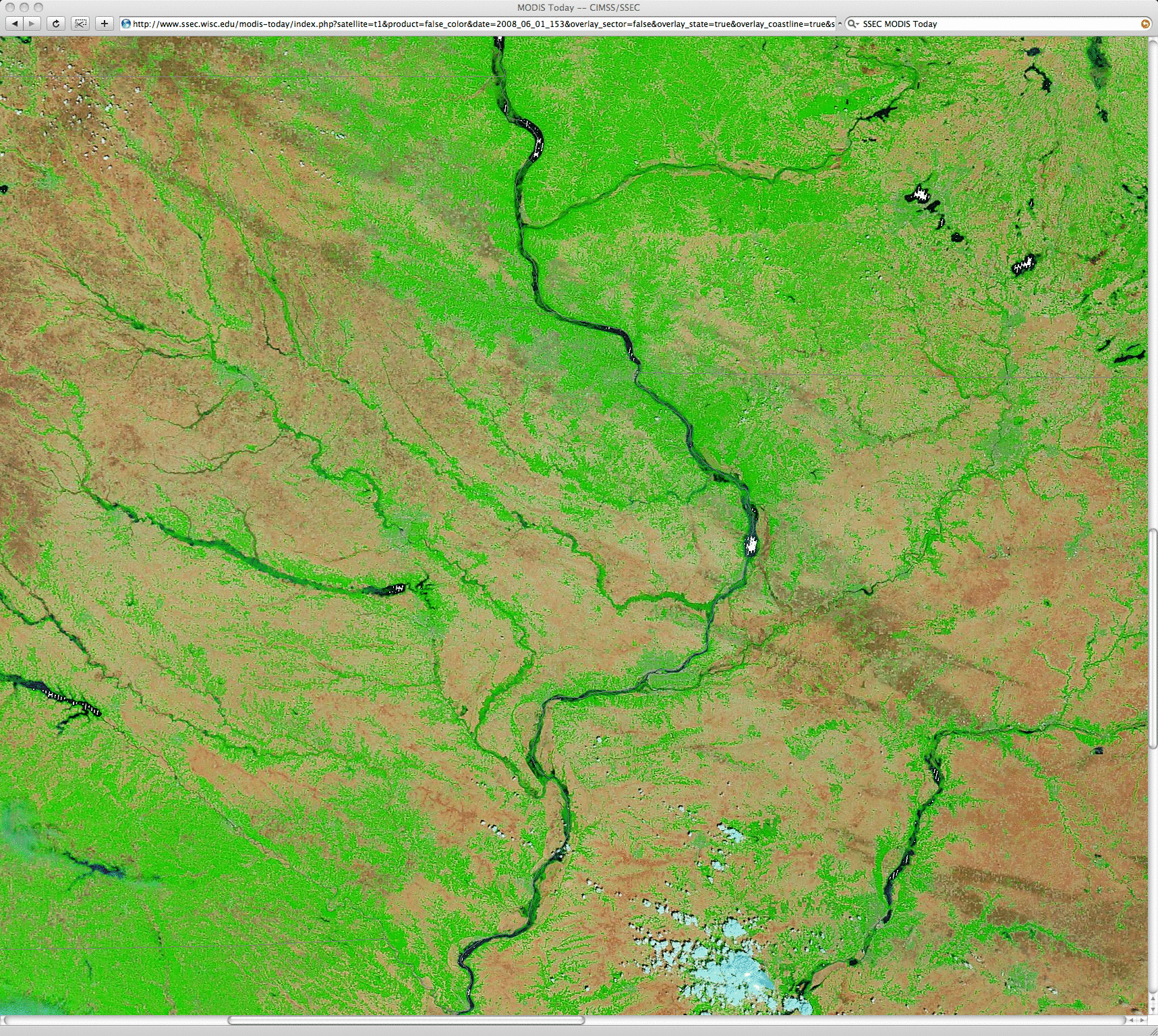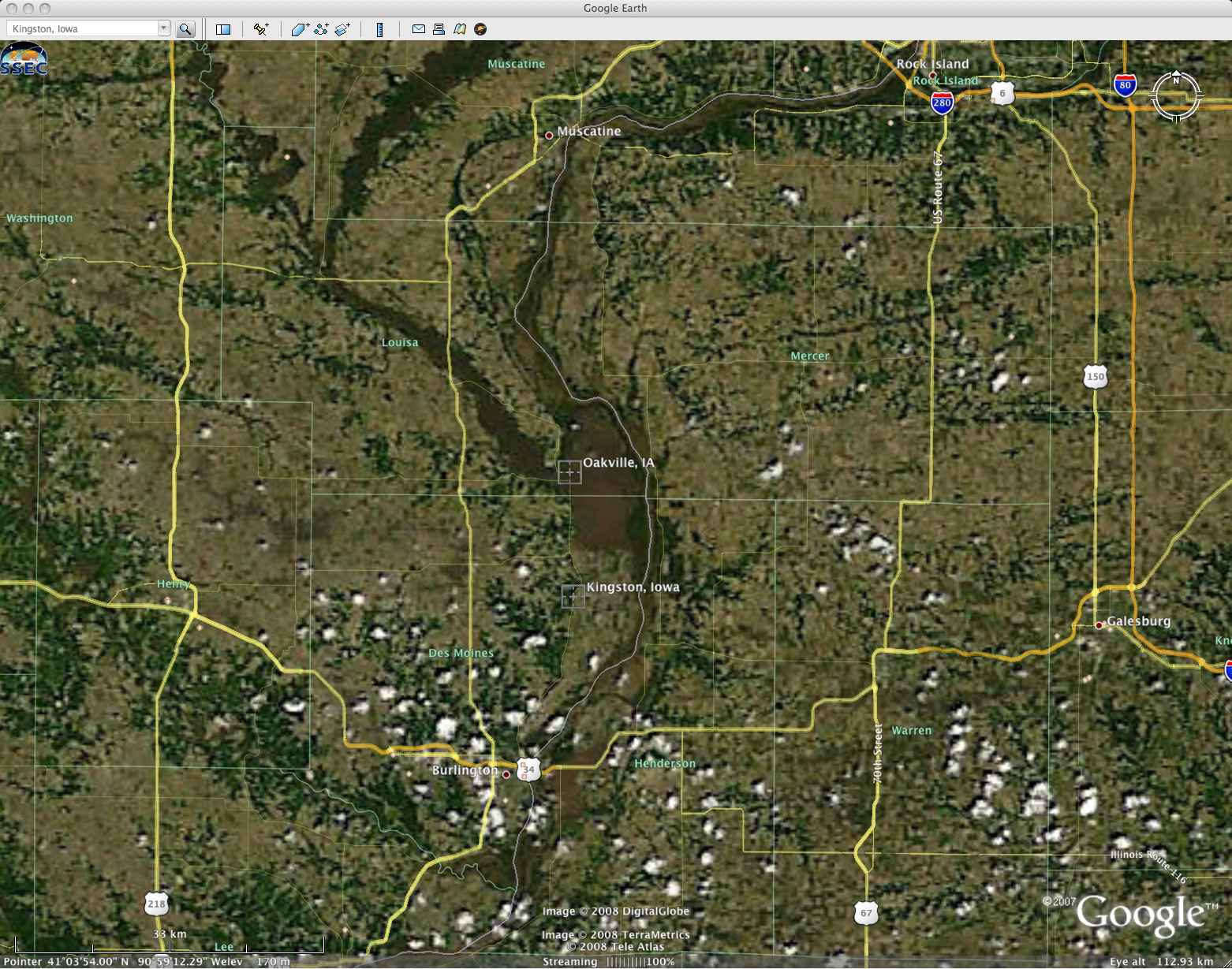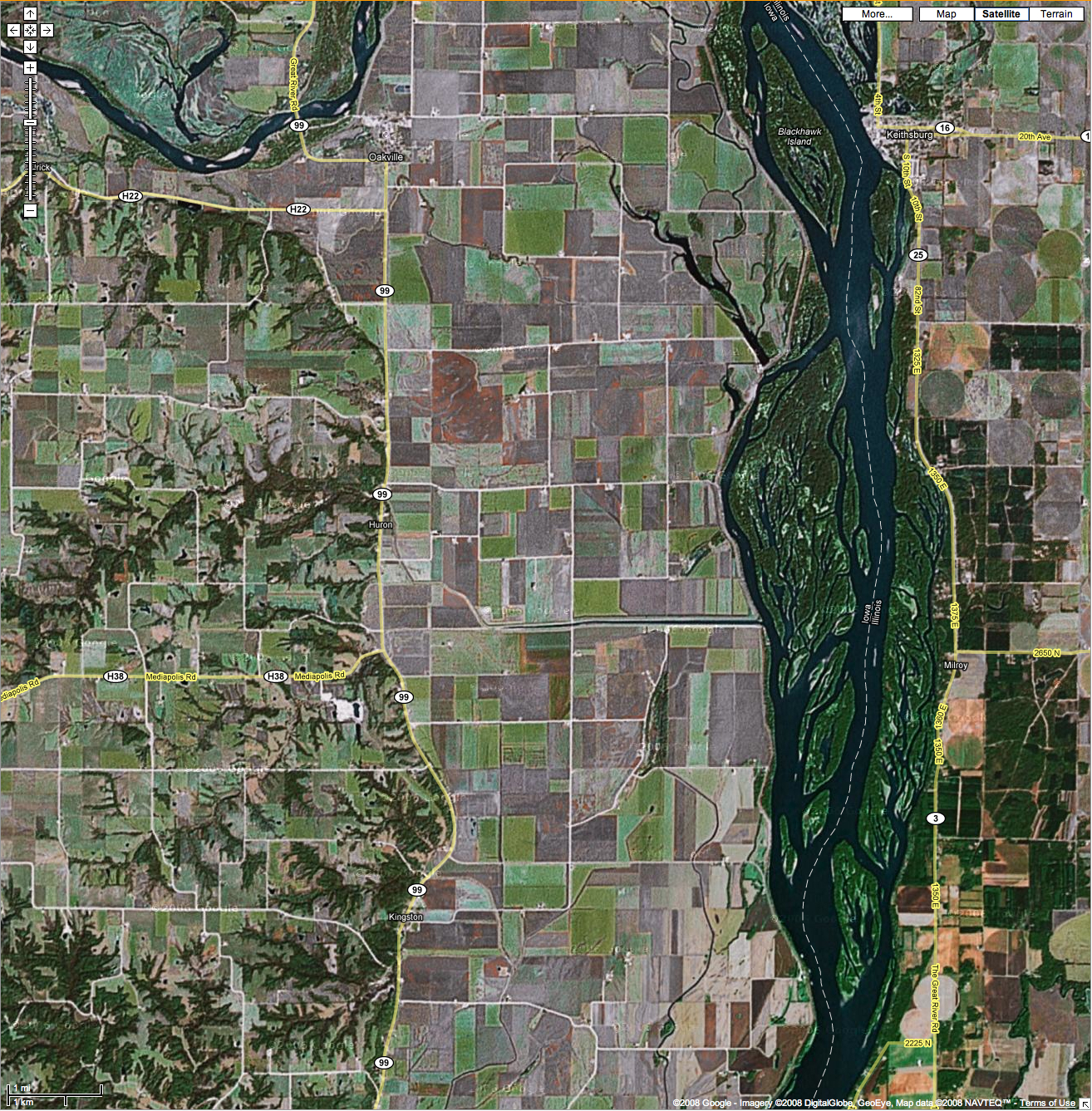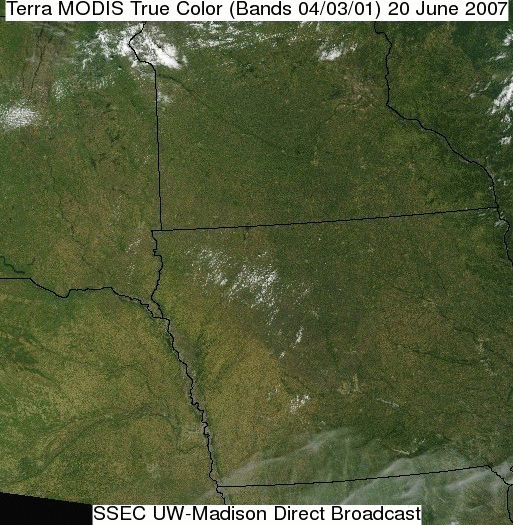Continued flooding in the Upper Midwest
The historic Central US river flooding event of 2008 continued into mid-June across parts of the Upper Midwest states (Google Earth map of river gauges). A sequence of MODIS false-color images from the SSEC MODIS Today site (above) covers the period from 01 June to 17 June, and shows the increase in flooded and inundated rivers across eastern Iowa, northwestern Illinois, and southwestern Wisconsin. Water has a much darker appearance in these false color images, so the swollen rivers tend to stand out in contrast to the densely-vegetated areas (green colors) which were characterized by a high concentration of trees, or the sparsely-vegetated agricultural fields (tan to light brown colors) where crops had only recently been planted.In particular, the MODIS images show the flooding of a large area of Iowa farmland adjacent to the Missisippi River (near the bottom center of the images), after the Iowa River broke through a levee near Oakville, Iowa on 16 June.
Flooding also forced the closure of the Great River Bridge that connects Iowa and Illinois along Highway 34 near Burlington, Iowa. On the MODIS true color image from 17 June (above; displayed using Google Earth), note the well-defined southern edge of the flooded area (darker brown colors) between Oakfield and Kingston, Iowa — this west-to-east oriented water boundary was likely due to a massive sandbagging effort along a diversion channel that runs eastward into the Mississippi River. This narrow diversion channel can be seen in more detail using Google Maps satellite imagery (below).
Farther to the west, a June 2007 vs. June 2008 comparison of MODIS true color images centered over southern Minnesota and northern Iowa (below; interactive image fader) revealed how delayed the “green-up” of cultivated crops (primarily corn and soybeans) was across that particular region. Cooler than normal temperatures in May 2008 followed by the unusually heavy rainfall and flooding in June 2008 conspired to delay the planting of crops across much of that area.
An AWIPS image of the MODIS Normalized Difference Vegetation Index (NDVI) product from 16 June (below) showed that NDVI values were as low as 0.2 to 0.3 over some portions of Minnesota and Iowa.
The “normal” Vegetation Fraction over that same region for the month of June (below) should be in the 0.5 to 0.7 range (based upon a 5-year monthly climatology).







